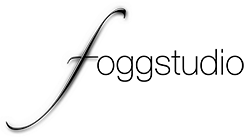Continued from Pescadero Creek | one …
This first post is necessarily long. My history with Pescadero is the length of my own life, full, rich and filled with surprises. It feels right. I’ve buried this long page down a few “clicks” on purpose because so many folks these days are averse to reading, can’t speed read or are just too busy. But, Pescadero isn’t a shallow sound byte and I’d like to share not only my image, but also my feelings in poetry and words. Most of my posts will be more like fleeting glimpses, short discoveries and insights, fun and at times lyrical.
Brambles and making photographs at Pescadero. If you notice a similarity to Northern European landscape paintings and especially etchings that’s not by accident. Before I ever used a camera my world was paper, graphite and lots of time observing. The edge and tooth one feels when looking closely at many etchings from the 17th century Dutch masters is something I’ve always loved. I get lost in their compositions as well. They’re often complex and interwoven with mystery. My eye explores worlds gone forever but still revels in how fresh they feel centuries later. I worked at achieving this effect relentlessly when I first started calibrating Black & White film. Finding a combination of film stock and development technique that would somehow mimic what happens when an engraver leaves some copper burrs on the plate so that ink might build up there and catch, however subtly, took me a long time. I found that if I left the film standing in the developer quietly and agitated at regular, but longer intervals (rather than the normal pace) I could achieve something close. The microscopic chemical reaction, sort of a boiling like affair, taking place at the boundaries between light and dark left tiny areas of “high acutance” as it’s called. I was hooked … it worked! The film I loved to shoot and the developers I used are no longer in production and my enormous reserves ran out long ago. But, I’ve kept the spirit and focus alive and have come pretty close to that same attention to detail now that we live and work in the digital domain. I’m still experimenting and not merely accepting what the camera delivers. It’s, as always, a tool for what I pre visualize
and feel at the moment. That balance is where I’m really focused.
This image of a massively overgrown area on the banks of Pescadero Creek with lichens, leaves and details in the thousands is perfect for treating a photographic something like an etching, at least in approach. Homage to the mentors I’ve never met but whose work I admire so deeply may be obvious to some. Light on tiny leaves, squiggly broken lines, dark unresolved areas are all part of that early netherlandish tradition.
The quiet township of Pescadero, California, falls within what geologists call the Coastal Plain, towards the southern end of Half Moon Bay. I’m sure my first visit to this magical town was in a basinet with my beach loving Mom and Dad. As a family, my parents, sister and I have been coming here all of our lives. My Mom’s ashes are close by. My front and back yards are filled with all sorts of stuff discovered throughout the years in the creeks, along quiet, winding back roads, in the sprawling estuary and of course from the nearby beaches. As a teenager and well into my adult life I’ve even surfed here. For a long time I lived just a few minutes up into the foothills, in the Redwoods, above Pescadero. It’s where I came day in and day out while calibrating large format black & white film for use in Ansel Adam’s Zone System of Pre-Visualizing, Shooting, Developing and Printing one’s work. Of all the places I’ve ever been or lived, Pescadero feels most like home, even though I can’t say I’ve ever lived exactly within it’s town limits. Living just up the hill was perfect. It’s always felt special even if, at times, it was only a few minutes away.
Oftentimes the coastal fog starts to clear over the marshlands, which lends a mystical aura to the already very special ambience of the protected Pescadero Natural Preserve. Pescadero Creek meanders down from the false coastal range, through the town of Pescadero itself, just behind the local church, and quietly finds it’s way to the Pacific. I used to catch Steelhead in the creek, sometimes …
